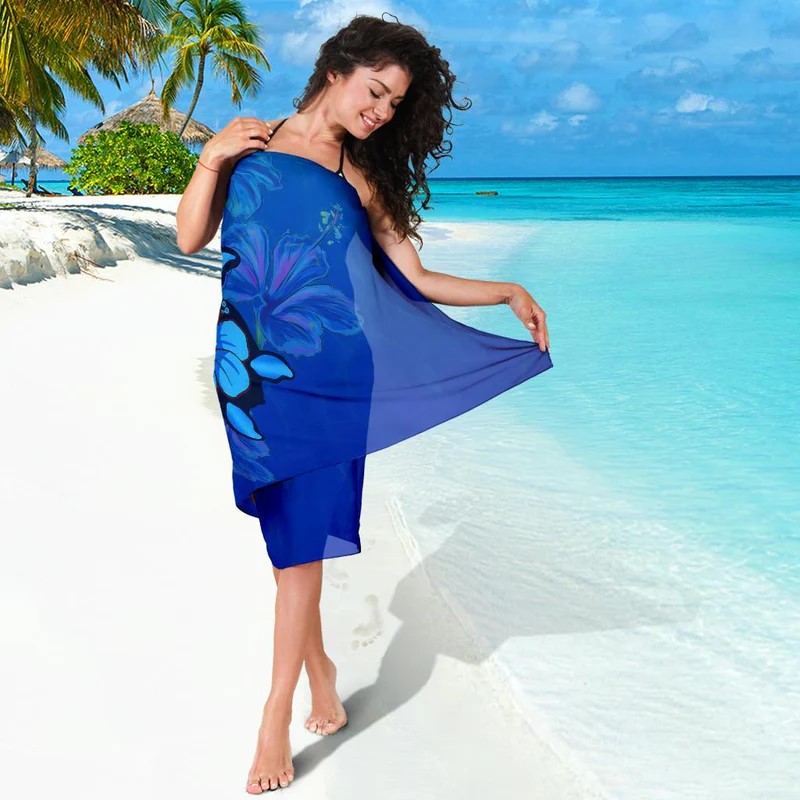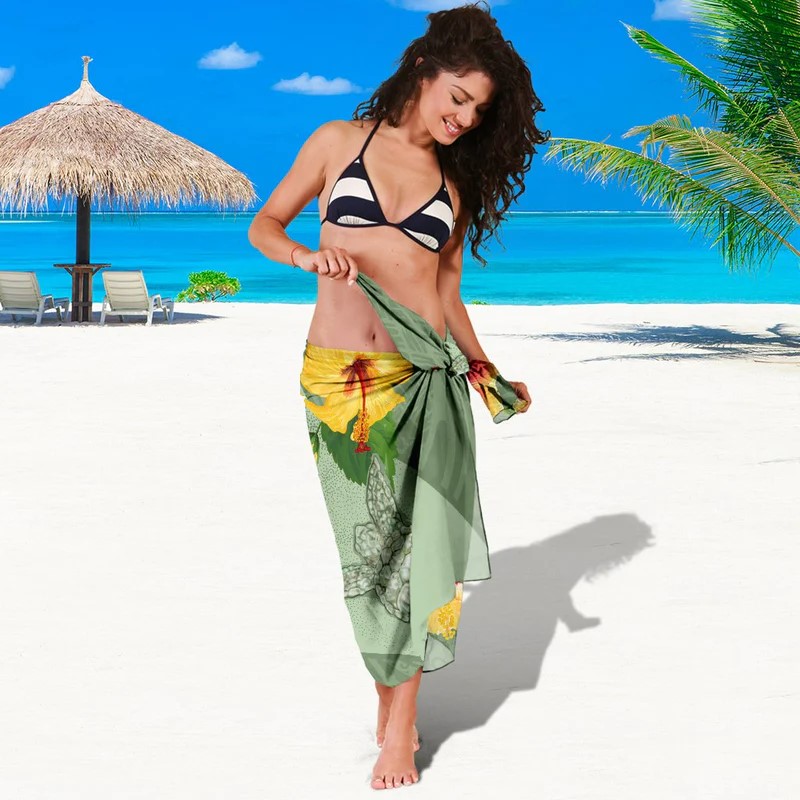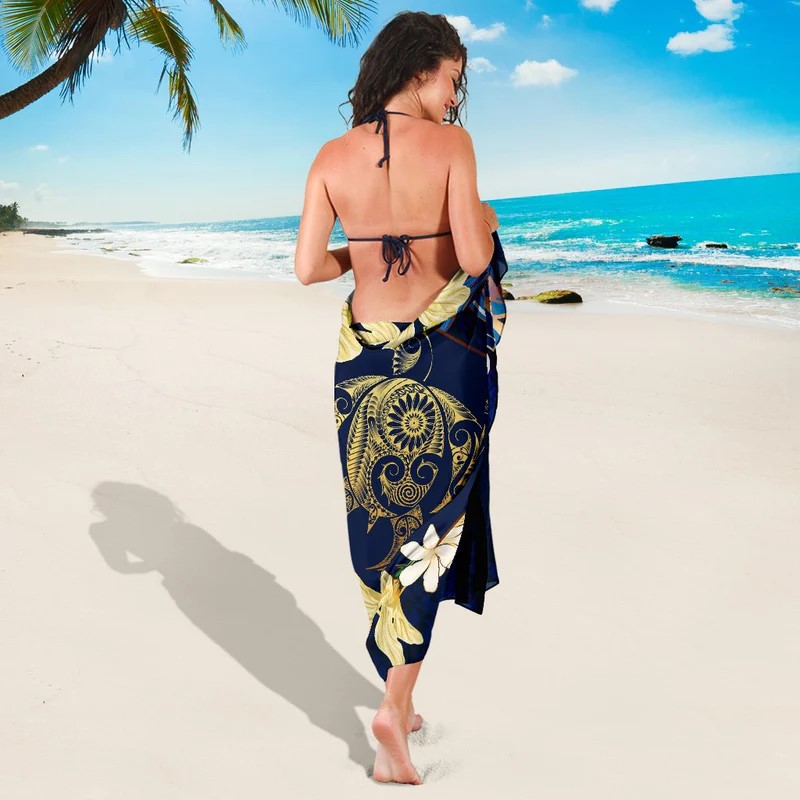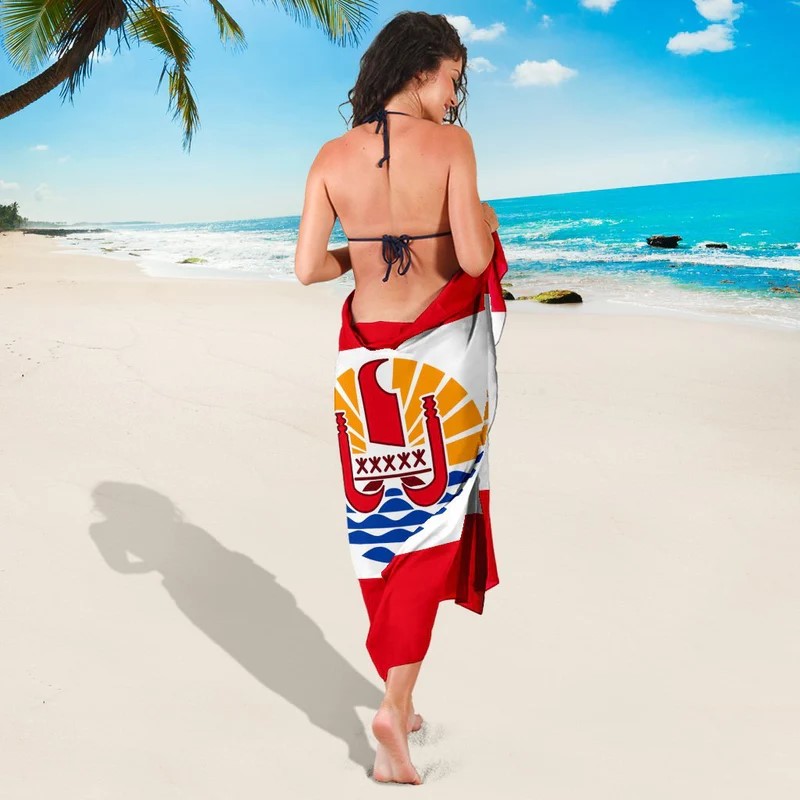How to Tie a Pareo: 8 Stunning Styles You Need to Try
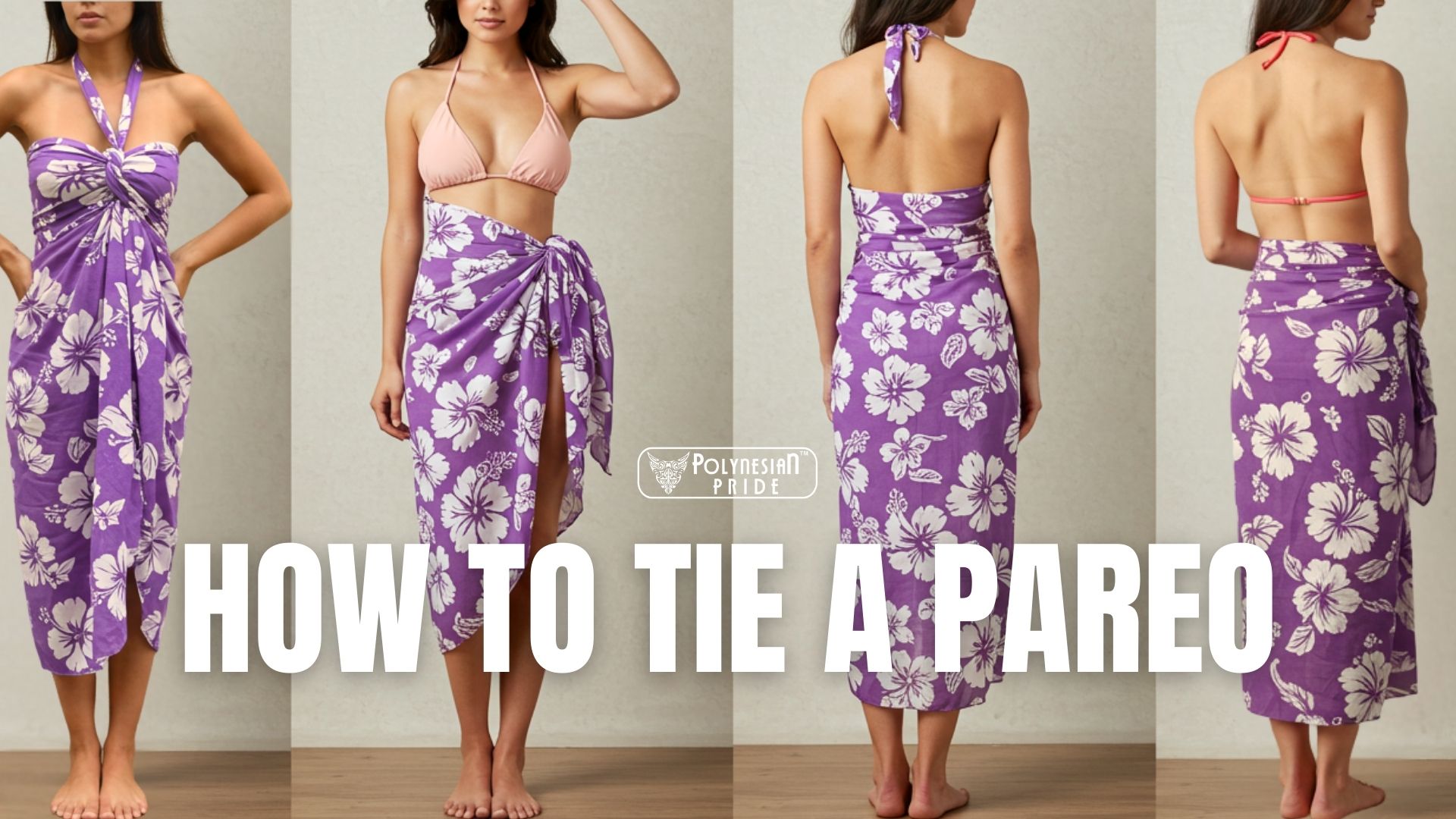
From Polynesian roots to global runways, the pareo is a symbol of effortless style and function. This versatile wrap can be transformed into elegant skirts, dresses, or beachwear. In this guide, discover the art of how to tie a pareo, tips for choosing the right one, and where to shop for high-quality styles for any occasion.
What is a Pareo?

A pareo is a large piece of typically rectangular fabric wrapped and tied around the body to create various clothing styles. While “pareo” is commonly used in Polynesia, particularly Tahiti, similar garments are called “sarongs” in Southeast Asia and other regions. The pareo is celebrated for its adaptability, allowing wearers to fashion it into skirts, dresses, tops, and accessories like bags or headwraps.
Not sure which is right for you? Dive into our pareo vs sarong guide to see the key differences and find your perfect match!
Cultural Significance
In Polynesian cultures, the pareo holds profound cultural importance.
Traditionally, men and women wore pareos, with designs and tying methods indicating social status, regional identity, or occasion. Beyond Polynesia, similar garments have been integral to Southeast Asian cultures, the Pacific Islands, and parts of Africa, each adding unique touches to the garment’s significance and style.
Modern-Day Uses
Today, the pareo has transcended its traditional roots to become a global fashion staple. It’s commonly seen as:
- Beachwear: This serves as a stylish cover-up over swimwear.
- Summer Fashion: Lightweight dresses or skirts are perfect for hot weather.
- Vacation Attire: Offering versatile outfit options for travelers.
- Evening Wear: Pareos can be styled into elegant evening dresses from luxurious fabrics like silk.
Why Learn to Tie a Pareo?
Learning to tie a pareo offers several benefits:
- Versatility: With a single piece of fabric, you can create multiple outfits suitable for beachwear, casual outings, or even formal events.
- Practicality: Pareos are lightweight, easy to pack, and can serve various purposes, making them ideal for travelers.
- Fashion Appeal: Available in a plethora of colors, patterns, and fabrics, pareos can complement any personal style.
Elevate your summer wardrobe with Polynesian Pride’s stylish sarongs—infused with cultural heritage and crafted for modern flair.
Choosing the Right Pareo
Selecting the appropriate pareo enhances both comfort and style. Consider the following factors:
Fabric & Material

- Cotton & Rayon: These materials are lightweight and breathable, ideal for warm climates and casual settings.
- Silk & Chiffon: These fabrics are perfect for formal occasions or evening wear, offering an elegant drape.
- Linen & Polyester Blends: Known for durability and wrinkle resistance, these are suitable for frequent use and travel.
Size & Shape Considerations

- Standard Pareo: Typically rectangular and around 66 x 44 inches, this size offers the most versatility.
- Mini Pareo: Shorter versions are ideal for skirts or casual wraps.
- Large Pareo: Provides extra coverage and is suitable for full-body wraps or elaborate styles.
Colors & Patterns

- Traditional Polynesian Prints: Feature floral and tribal motifs reflecting the garment’s cultural heritage.
- Modern Minimalist Designs: Solid colors and geometric patterns cater to contemporary tastes.
- Bright & Bold Colors: Vibrant hues are perfect for tropical vacations or making a fashion statement.
Essential Ways to Tie a Pareo (Step-by-Step Guide)
Mastering basic tying techniques allows you to maximize the pareo’s potential. If you’re wondering how to wear a pareo stylishly and effortlessly, here are some foundational styles to get you started:
Classic Waist Tie (Skirt Style)
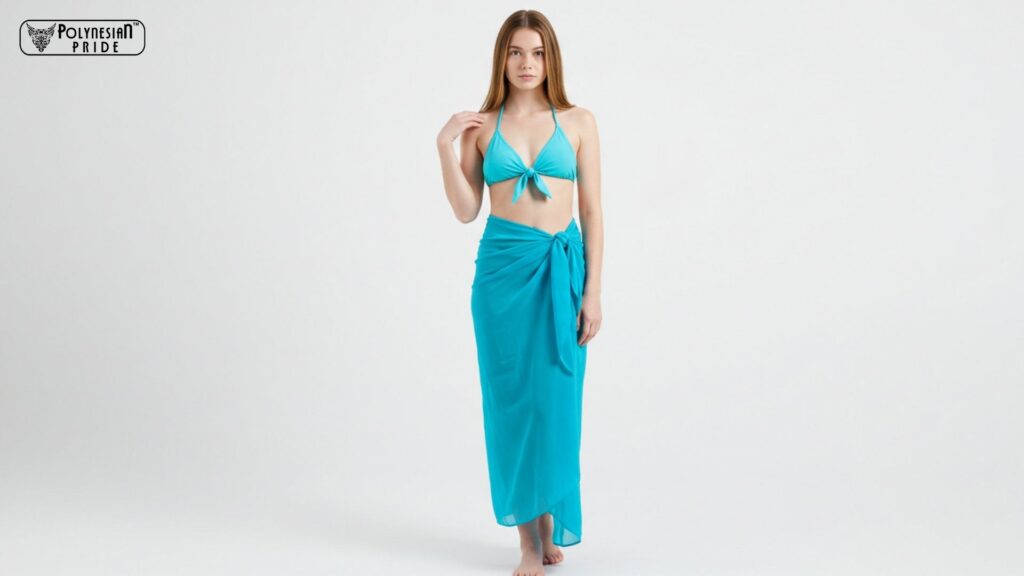
- Wrap the pareo around your waist, ensuring both ends are even.
- Bring the two ends together at your hip.
- Tie them into a secure knot.
- Adjust the fabric to sit comfortably on your hips.
Side Slit Skirt

- Hold the pareo horizontally behind you.
- Wrap one end across your waist to the opposite hip.
- Bring the other end around, overlapping the first.
- Tie the corners at your hip, leaving a side slit open for ease of movement.
Simple Strapless Dress

- Hold the pareo behind your back at chest level.
- Wrap it around to the front, ensuring both ends meet evenly.
- Tie a knot at the center of your chest.
- Adjust the fabric to cover the area appropriately and ensure a snug fit.
Halter Neck Dress

- Hold the pareo behind you at shoulder level.
- Bring the two top corners to the front.
- Cross them over your chest.
- Tie the ends behind your neck.
- Adjust the front for desired coverage and comfort.
One-Shoulder Dress

- Wrap the pareo around your body, aligning the top edge with your chest.
- Take one corner and bring it over one shoulder.
- Tie it to the opposite corner under your arm or behind your back.
- Adjust the drape for a stylish one-shoulder look.
Still looking for the perfect sarong this summer? Let Polynesian Pride bring you stunning designs that celebrate Polynesian heritage!
Advanced & Stylish Ways to Tie a Pareo
For those looking to elevate their pareo styling, here are some advanced techniques that take how to wear a pareo wrap to the next level:
Wrap Jumpsuit/Romper Style
- Hold the pareo vertically behind you.
- Bring the bottom edge up between your legs to the front.
- Pull the top corners over your shoulders to the front.
- Cross the top corners over your chest and tie them behind your neck.
- Tie the bottom corners around your waist at the back.
- Adjust the fabric for a comfortable fit, creating a romper appearance.
Twist-Front Top
- Hold the pareo behind your neck, letting it drape over your chest.
- Bring the ends to the front.
- Twist the ends together at the center of your chest.
- Wrap them around your back.
- Tie the ends securely at your back.
- Adjust the front twist for a flattering look.
Asymmetrical Draped Skirt

- Hold the pareo diagonally to create a triangle.
- Wrap it around your waist, letting one side hang lower for a high-low effect.
- Tie
Accessories & Tips for Wearing a Pareo
Mastering how to tie a pareo is just the beginning. The right accessories and styling details can elevate your look and personalize your outfit.
How to Secure Your Pareo

- Knots & Ties: The simplest way to fasten a pareo is with a secure double knot. Use square knots for strength or a simple tie for easy adjustments.
- Pareo Clips & Rings: Available in wood, shell, or plastic, pareo clips and rings make it easy to hold the fabric in place while adding a polished, decorative touch. They are ideal for strapless and halter styles.
- Brooches & Pins: For a sophisticated twist, fasten your pareo with decorative brooches or pins. This works well with dressier styles, especially with silk or chiffon fabrics.
Pairing with Accessories
- Belts: Cinch your waist with a slim or wide belt to create shape and structure, especially when wearing a pareo as a dress.
- Jewelry: Opt for shell necklaces, beaded bracelets, or handmade earrings to complete your tropical or beachy look.
- Footwear: Sandals and espadrilles work well with casual pareo styles, while bare feet add authenticity at the beach. For formal looks, metallic flats or wedges provide a touch of glam.
Best Occasions to Wear a Pareo


- Beach & Poolside: Pareos are perfect as quick cover-ups after a swim. Tie it as a skirt or strapless dress for easy movement and sun protection.
- Resort & Cruise Wear: A printed pareo styled as a maxi dress or halter gown can look elegant yet effortless for lounging or dinner at a tropical destination.
- Summer Casual Wear: Light, breathable, and stylish, pareos double as casual daytime wear when styled with tank tops or worn as flowy dresses.
- Formal Events: A silk or satin pareo with heels, jewelry, and a structured wrap can become a chic evening outfit at a beach wedding or sunset dinner party.
Where to Buy High-Quality Pareos?
Finding the perfect pareo can be an exciting journey. Whether you’re drawn to modern styles or designs rich in cultural heritage, there are several trusted sources worth exploring. Here are some of the top places to shop for these versatile garments:
- Etsy: Explore a wide selection of handcrafted pareos from independent artisans. From vintage finds to contemporary prints, Etsy offers one-of-a-kind pieces full of personality.
- Amazon: Enjoy the convenience of Amazon’s extensive collection, complete with customer reviews, size guides, and fast shipping—perfect for effortless pareo shopping.
- Local Boutiques & Coastal Markets: Unearth locally made pareos that reflect regional culture and artistry. These one-of-a-kind finds often showcase traditional techniques and vibrant island flair.

Bring a touch of island charm to your wardrobe—visit Polynesian Pride to discover our unique range of sarongs and pareos!

CONCLUSION
From its Polynesian roots to global beach resorts and fashion runways, the pareo is more than just a piece of fabric—it’s a timeless expression of culture, elegance, and creativity. Whether you prefer traditional prints or modern styles, learning how to tie a pareo opens up a world of styling possibilities.
As you’ve seen, the pareo is one of the most versatile garments in any wardrobe. With the right fabric, practice, and flair, you can turn this simple cloth into a sarong skirt, a halter dress, a beach cover-up, or even an evening gown.
So experiment with different tying styles, play with accessories, and make the pareo your own. It’s not just a fashion statement—it’s a wearable celebration of heritage, freedom, and self-expression.
Frequently Asked Questions
1. What’s the difference between a pareo and a sarong?
Both are similar garments, but “pareo” is the Tahitian term, while “sarong” is more common in Southeast Asia. They differ slightly in traditional use and styling.
2. Can men wear pareos?
Absolutely! In many Polynesian cultures, men traditionally wear pareos (sometimes called lava-lava or sulu) wrapped as skirts or shorts.
3. What’s the best fabric for a pareo?
Cotton and rayon are ideal for casual wear, while silk and chiffon are great for dressier looks. Choose based on the occasion and climate.
4. How do I wash my pareo?
For delicate fabrics, hand-wash in cold water. For cotton or rayon, machine wash gently and hang to dry.
5. Can I wear a pareo as a dress to a formal event?
Yes! When tied creatively and accessorized well, a pareo—especially silk or satin—can be styled into an elegant evening dress.

I am Leilani Miller – I research focusing on Vanuatu – volcanic landscapes, blue holes, coral reefs & rainforests. I have over five years of experience researching and sharing insights on tourism and environmental activism. Explore and experience without limits through my latest article.
Contact information:
Email: [email protected]
Tel: +1 (808) 555-1528

